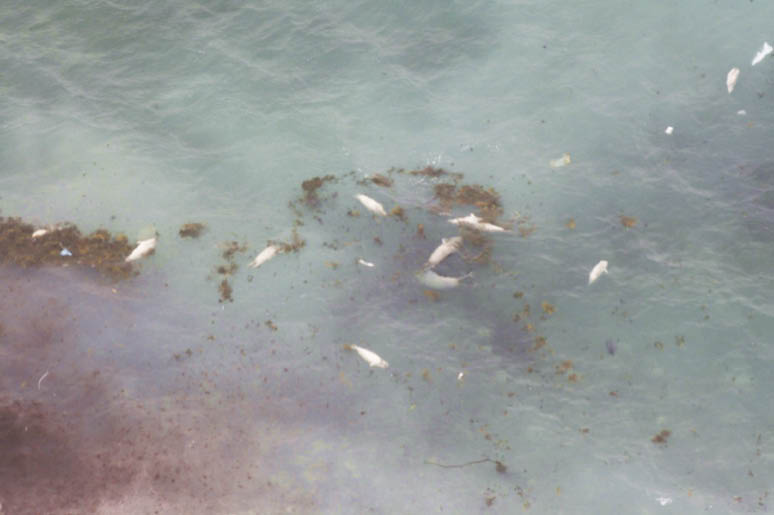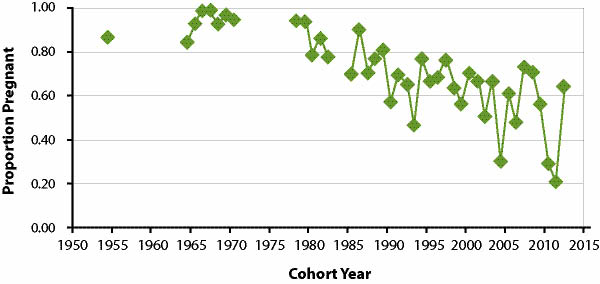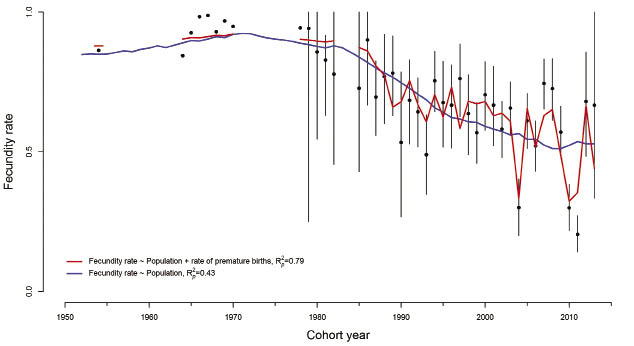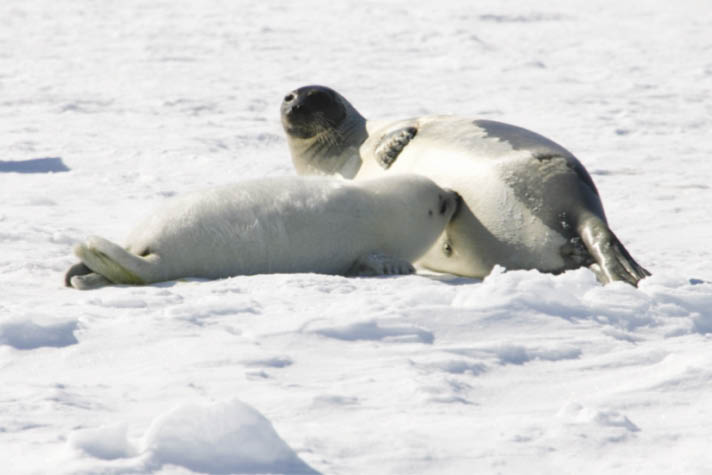Center of Expertise in Marine Mammology: Scientific Research Report 2012-2014
Table of Contents
- Acknowledgements
- Message from the Director of CEMAM
- The 2013 High Arctic Cetacean Survey
- St. Lawrence Estuary Beluga
- Predator-borne Acoustic Transceivers and GPS Tracking Reveal Encounters with Acoustically Tagged Free-ranging Marine Fish
- Long-term Measures of Reproductive Performance Reveal Marked Variation in Fitness in Grey Seals
- Year-round Atlas of Shipping Noise: The PSSEL Model
- Climate Related Changes in the Quality and Availability of Land Fast Sea Ice Suitable for Breeding Ringed Seals Along the Coast of Labrador
- Belugas and Ringed Seals: Indicators of Ecosystem Change in the Beaufort Sea
- The Impact of Climate Change on Reproduction in an Ice-dependent Species, the Northwest Atlantic Harp Seal
- Publications 2012-2014
The Impact of Climate Change on Reproduction in an Ice-dependent Species, the Northwest Atlantic Harp Seal
Garry Stenson
Trends in populations are influenced by changes in reproduction that are the result of a complex interaction between intrinsic factors related to changes in population (i.e., density dependent) and extrinsic factors driven by environmental variability (i.e., density independent). As species encounter changing environmental conditions as a result of climate change, understanding the influence of these different factors becomes critical if we wish to predict how a species will respond. Unfortunately, determining the relative importance of these different factors is difficult for most species as they require extensive, long term measurements of reproductive rates, population size, and a variety of environmental factors. Notwithstanding these challenges, gaining an understanding of the factors that influence reproduction is important as environmental conditions throughout the world are changing rapidly, particularly in Arctic and sub-Arctic areas. Perhaps the most dramatic have been the reductions in sea ice extent. As the earth continues to warm, these alterations in the sea ice will continue, resulting in serious impacts on a number of species that inhabit ice-covered areas for reproduction and/or feeding during all, or part of the year.
Harp seals (Pagophilus groenlandicus) are the most abundant marine mammals in the North Atlantic. They are an ice-dependent species, giving birth and nursing their pups on pack ice each spring. Their annual movements appear to follow the development and retreat of the ice pack, and these seals are often seen feeding along the ice edge throughout the year. The Northwest Atlantic population ranges from the eastern Canadian Arctic and Baffin Bay in the north to the Gulf of St. Lawrence in the south. Each spring they give birth on the pack ice of the Gulf of St. Lawrence or off the coast of southern Labrador and northeastern Newfoundland.
Although water temperatures have varied historically, over the past four decades there has been a trend towards warmer water temperatures. As a result, there has been a decline in sea ice extent and coverage. Poor ice conditions have been shown to impact harp seals directly by increasing mortality of young-of-the-year seals who need stable ice for nursing and later for resting during their post-weaning fast. If the ice is not extensive or thick enough, winter storms can break up the ice forcing the young seals into the water where they can drown. Additionally, these changes in ice quality and extent can also induce changes in the ecosystem which can impact harp seals indirectly by influencing prey availability and subsequent reproductive success.

White-coated harp seals that drowned due to the breakup of the sea ice upon which they were born. Photo: Garry Stenson
To determine if environmental changes are impacting the reproductive success of harp seals, late-term pregnancy and abortion rates of Northwest Atlantic harp seals were estimated from female harp seals collected between 1954 and 2014 off Newfoundland and southern Labrador. Most of these samples were collected by hunters who are part of a cooperative science programme with the Marine Mammal Section that has been in place since the late 1970s. In some areas we are working with the third generation of collectors from the same family. During the winter, hunters collect seals and freeze them whole until DFO personal can visit to carry out necropsies. At that time, the seals are thawed, and we collect morphometric measurements and biological samples to determine reproductive status, age, and recent diets. All of the hunters have also been trained to collect and preserve the samples if they hunt in the spring. This long term data series allows us to examine the importance of various factors that influence reproduction in Northwest Atlantic harp seals.
Since the early 1980s, pregnancy rates have declined (Figure 14), while inter-annual variability increased, with late-term pregnancy rates among mature females falling to less than 30% in 2011. Comparing the reproductive data to a variety of concurrent environmental and biological factors, we found that while the general decline in fecundity is associated with increased population size, including late term abortion rates in the analysis explained much of the large inter-annual variability (Figure 15). Changes in abortion rates can be described by a model that incorporated late January ice cover and capelin biomass; it is likely that ice cover is also a proxy for ecosystem changes in prey availability or abundance.

Figure 14. Proportion of mature northwest Atlantic harp seal females that are pregnant (fecundity) for the period 1954 to 2014.

Figure 15. Results of models to examine the influence of biological and environmental factors on pregnancy rates of mature harp seals (fecundity) in the Northwest Atlantic. The best model (red) incorporates changes in harp seal population size and late abortion rates.
Thus it appears that harp seal reproductive rates are extremely sensitive to inter-annual variation in the biological and physical environment during periods of high seal abundance. Although environmental conditions varied while the population was relatively low during the 1970s and early 1980s, fecundity remained high. By the late 1980s, however, poor ice conditions and low capelin abundance resulted in high abortions rates and as a result, low fecundity.
Climate change models predict that the warming trend seen in the Gulf of St. Lawrence and Newfoundland waters will continue and that there will be greater inter-annual variability in environmental conditions. If correct, future climate-related impacts on harp seals will be unpredictable, but generally negative; pup mortality will likely be high, and reproductive rates will remain, on average, relatively low and highly variable. Given the highly variable annual pregnancy rates we have seen, continued effort to obtain accurate estimates is critical for assessing this population to determine harp seals’ future population responses in a changing environment. As a key component of the Northwest Atlantic ecosystem, such responses could have significant impacts on other species that harp seals consume or with whom they compete.
- Date modified:
